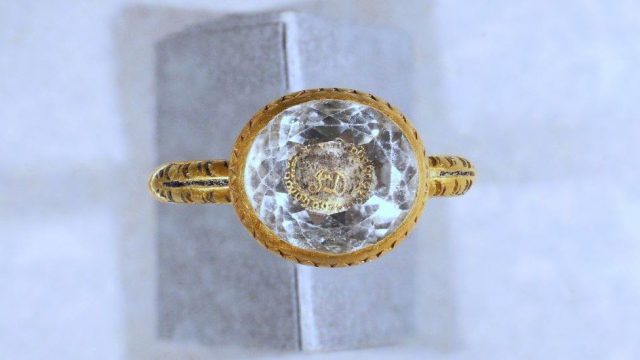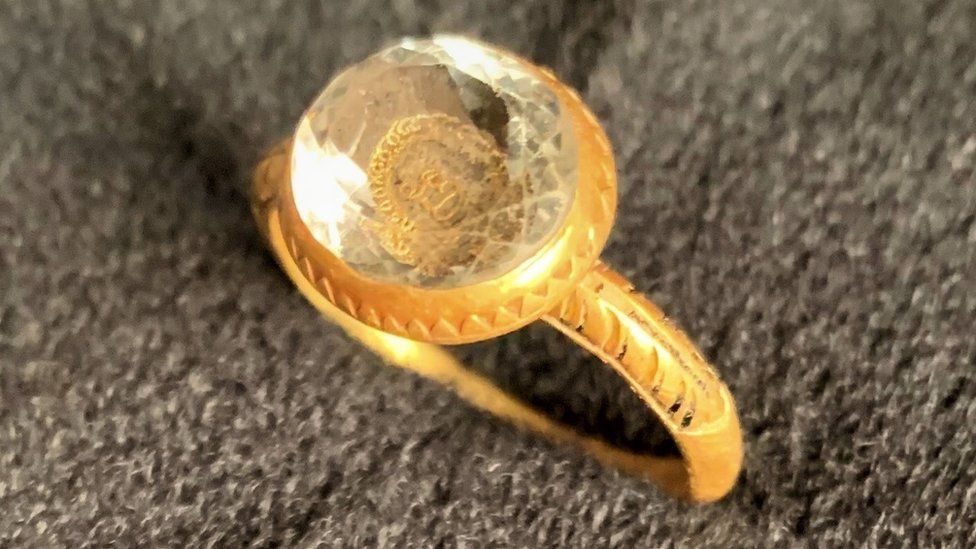In December of 2020, Lee Morgan was walking around with a metal detector near Douglas on the southern shore of the Isle of Man, an island in the Irish Sea between England and Ireland currently a self-governing British Crown dependency. When Morgan’s metal detector went off what was found was an exquisitely fine ring from the time of the English Civil War from 1642 to 1651.
Because of the UK’s 1996 Treasure Act, which defines treasure as when objects recovered are found to be more than 300 years old, made of gold or silver, or found with artifacts made of precious metals.
If the object meets this criterion, it automatically becomes the property of the Crown and can be put in a museum. Often, the funds from the sale are split by the Crown, the landowner and the person who discovered the artifact.
The Isle of Man’s policy is somewhat different and artifacts found on the island which are at least 300 years old and contain at least 10% precious metal are considered treasure and must be reported to Manx National Heritage. The finder is usually compensated.

The ring, which appears to be mourning jewelry, is made from gold with black enameled inlays and a crystal stone cut like a diamond to catch and reflect light. There is a crest on the flat table of the gem with the initials JD. Mourning jewelry has always been popular, especially in the 1800s, and often contained locks of the deceased’s hair in rings and brooches.
Now it is mostly small decorative urns worn as a necklace with a loved one’s ashes kept inside.
The initials on the stone may represent the 7th Earl of Derby and Lord of Man James Stanley whose signature was J Derby. Stanley supported the Royalists (Cavaliers) during the war and in 1642 raised over six thousand men to fight for King Charles I. Unfortunately, his army was not well trained and because Stanley’s huge ego often offended his subordinates the group was disbanded by 1643 and Stanley was sent to the Isle of Man, according to encyclopedia.com.
After spending the next seven years on the Isle of Man, where he offered refuge to Royalists, he emerged again to fight on the mainland of England at Marston Moore in 1644 just west of York under Prince Rupert of the Rhine. The Royalists were soundly defeated by the Parliamentarians (Roundheads) under Oliver Cromwell who was aided by the Scots.
Stanley participated in the Battle at Wiggans Lane and at Worcester in 1651 where he was captured. He was tried in Chester, found guilty of treason and sentenced to death. Stanley was executed in Bolton, a town he and his armies along with Prince Rupert’s men had sacked in 1644 with over fifteen hundred civilians killed.
When one of Rupert’s men was captured and hanged because he was an Irish Papist, Rupert was so angered he ordered attack after attack until the town was captured. Prince Rupert recorded in his journal that it was “a great slaughter of the enemy.”

When Stanley was taken to the scaffold in front of The Olde Man and Scythe Inn he had to wait several hours with what was left of the entire town watching before he was executed at the age of forty four. Before he was finally executed Stanley remarked that whatever he had done was for “his King, his country and his Protestant faith”, according to Wayback site at the teacher99.btinternet.co.uk.
It is believed his wife, Charlotte, Lady Derby, gave out these rings during the funeral to keep Stanley’s name from being forgotten to history. Stanley was buried at St. Peter and St. Paul Churchyard in Ormskirk, West Lancashire District, Lancashire, England in the Derby Chapel and his wife joined him in 1664.
Another Article From Us: Corsican Necropolis Reveals 40 Skeletons Buried In Jars
The ring, which has yet to be valued, is now being held at the medieval gallery at the Manx Museum in Douglas, the capital of the Isle of Man and will go on display Saturday, April 24th 2021.
